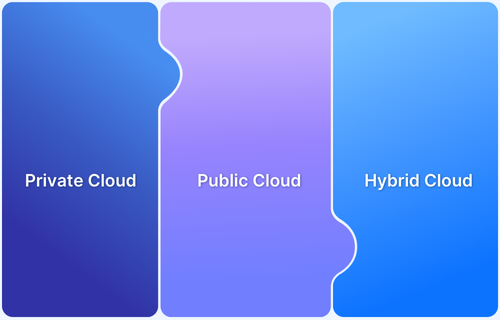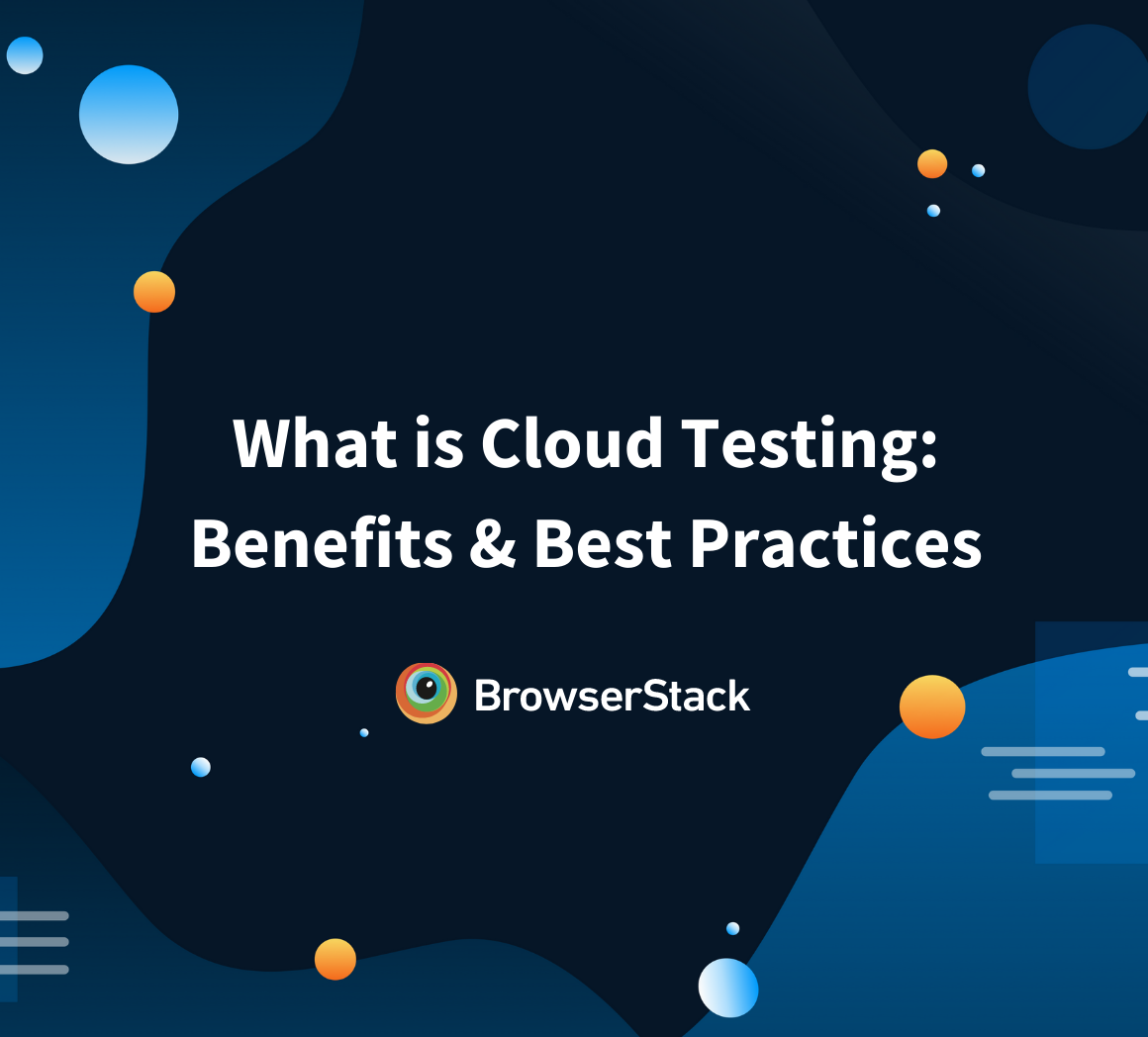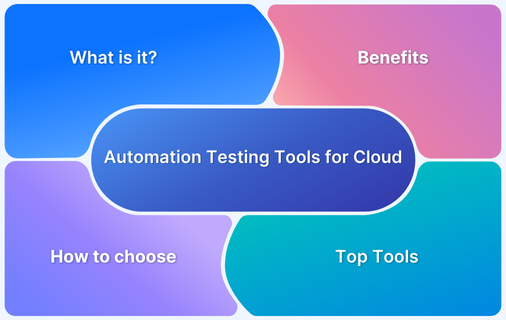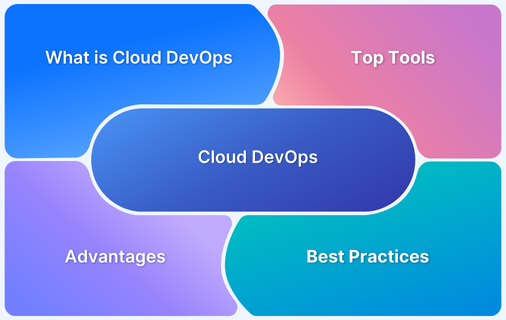Cloud computing enables businesses to access computing resources on demand without maintaining physical infrastructure. There are three types of cloud computing models: private, public, and hybrid.
Overview
Different Types of Cloud Computing Models
- Private Cloud: It is a cloud computing environment dedicated to a single organization. It is perfect for businesses that require strict data security, regulatory compliance, and full control over resources.
- Public Cloud: In this model, resources like servers and storage are shared among multiple users but are owned and managed by third-party providers. It is perfect for those looking for cost-effective and flexible solutions.
- Hybrid Cloud: It involves using both private and public cloud models together. It is ideal for businesses that require a balance of security and scalability.
This article explains what private, public, and hybrid clouds are, including their benefits and drawbacks, to help you choose the right cloud computing model.
What is Cloud Computing?
Cloud computing delivers computing services over the Internet and eliminates the need for organizations to own or maintain physical hardware. Instead of relying on local devices, cloud computing uses a network of remote servers to store, process, and manage data. This helps businesses scale operations, improve collaboration, and adopt advanced technologies without high infrastructure costs.
Cloud computing offers three primary models: public, private, and hybrid clouds. Each model caters to different business needs by balancing factors such as cost, control, scalability, and security.
Private Cloud: An Overview
A private cloud, also known as an internal or corporate cloud, is a cloud computing arrangement where all hardware and software resources are dedicated to a single organization. It is not shared with the public and is designed to serve an internal network or specific users within the organization.
Organizations can deploy and manage private cloud resources in various ways. They can use their current infrastructure in an on-site data center or build a new, independent infrastructure internally or with the assistance of a third-party provider. In certain situations, virtualization tools are used to create a private cloud within a single-tenant environment.
Read More: What is Data Virtualization
Advantages and Disadvantages of Private Cloud
Private clouds give organizations greater control, security, and customization but have higher costs and complex management. Below is a table highlighting the key pros and cons of private cloud.
| Aspects | Pros | Cons |
|---|---|---|
| Control | Complete control over hardware and resources | High upfront investment in infrastructure and skilled staff |
| Security | Higher security and privacy with restricted access | Requires expertise in managing firewalls, encryption, and other security measures |
| Performance | Improved performance and efficiency with dedicated resources | Potential for underutilized resources during non-peak times |
| Customization | Customizable infrastructure and security settings | Less flexible scaling, as expansion requires additional hardware |
| Compliance | Meets strict data security and compliance standards | Requires regular audits and updates to ensure compliance, adding to operational costs |
| Efficiency | Efficient resource usage for better performance | Limited collaboration with external users due to internal-only access |
| Continuity | Backup, disaster recovery, and failover features ensure continuity | Requires trained experts to implement and manage these features |
| Network Speed | Improved network performance without congestion from shared resources | Limited by internal network infrastructure or capacity constraints |
Public Cloud: An Overview
A public cloud is a third-party managed platform that provides on-demand resources, applications, and services to users globally. It offers IT infrastructure components like virtual machines (VMs), containers, serverless computing, applications, and storage, all accessible over the Internet.
Public cloud services support various workloads, such as databases, firewalls, load balancers, management tools, and different Platform-as-a-Service and Software-as-a-Service options. Businesses can combine these resources to create an enterprise application and service infrastructure.
Advantages and Disadvantages of Public Cloud
The public cloud provides scalability, cost efficiency, and flexibility. However, it comes with challenges like limited control, vendor dependency, and potential performance issues. Below is a table that explains the advantages and disadvantages of using public cloud.
| Aspect | Pros | Cons |
|---|---|---|
| Scalability | Resources scale easily to handle fluctuating demands without major investment | Over-scaling may lead to increased, unexpected costs |
| Cost Efficiency | Pay-as-you-go pricing helps businesses pay only for what they use and reduces upfront costs | Hidden charges for data transfer, storage, or additional services can make costs unpredictable |
| Data Storage and Backup | Provides efficient storage solutions with robust disaster recovery options | Businesses have limited control over data management and compliance due to provider restrictions |
| Global Availability | Services are available globally, ensuring high availability and redundancy | Latency and downtime risks arise from dependence on the provider’s data center locations |
| Performance and Speed | High-performance resources support demanding applications and workloads | Performance may degrade due to shared infrastructure and result in slower response times |
| Security and Compliance | Built-in security features and compliance frameworks from the provider | Multi-tenancy can create security risks and complicate compliance with industry-specific regulations |
| Vendor Lock-In | Easy integration with other cloud services within the same provider ecosystem | Migrating to another provider is difficult due to proprietary technologies and dependencies |
| Management and Maintenance | Providers handle infrastructure updates and maintenance, which reduces IT workload | Businesses have limited customization options because the provider controls settings and infrastructure management |
Hybrid Cloud: Best of Public and Private Cloud
A hybrid cloud combines public and private cloud services. It connects on-premises data centers with public cloud resources like storage, applications, or computing power. A hybrid cloud might also incorporate private assets like edge devices, additional storage, or dedicated cloud resources.
Organizations can dynamically manage workloads with a hybrid cloud based on their needs. For example, sensitive data or critical applications can be hosted on private clouds for added security, while less sensitive tasks or data can be handled by public cloud services to benefit from scalability and cost-effectiveness.
Advantages and Disadvantages of Hybrid Cloud
Like private and public clouds, hybrid clouds have advantages and disadvantages. The table below highlights the key benefits and drawbacks of hybrid clouds.
| Aspect | Pros | Cons |
|---|---|---|
| Security | Organizations can store sensitive data in the private cloud while using the public cloud for less critical tasks | Managing security across both clouds demands expertise |
| Flexibility | A hybrid cloud offers flexibility by allowing businesses to choose the right cloud for different tasks | Integrating resources from both clouds often proves complex |
| Performance | Combining both cloud types improves overall performance | Variations in performance may occur due to differences in cloud resources |
| Risk Management | Distributing workloads across clouds lowers the risk of failure | Syncing and integrating data can introduce delays |
| Compliance and Legal | Businesses ensure compliance by storing sensitive data in the private cloud | Meeting compliance requirements in public clouds can be tricky |
| Scalability | Businesses can scale easily by tapping into public cloud resources for extra capacity | Coordinating scaling efforts between private and public clouds can be challenging |
Read More: Why DevOps Teams Need Cloud-Based Solutions
Private Cloud vs. Public Cloud vs. Hybrid Cloud: Key Differences
The primary differences among these cloud models include control, security, scalability, and cost.
A Private Cloud offers exclusive resources and robust security but requires significant investment and continuous upkeep. A Public Cloud is cost-effective and can scale effortlessly, but it depends on shared resources, potentially leading to security concerns. A Hybrid Cloud merges the benefits of both and allows businesses to maintain crucial functions privately while enjoying the cost efficiency of the public cloud.
Here are the key differences between private, public, and hybrid cloud models.
| Aspects | Private Cloud | Public Cloud | Hybrid Cloud |
|---|---|---|---|
| Infrastructure Ownership | Fully owned and controlled by one organization | Managed and operated by a third-party provider | Uses both private and public cloud resources together |
| Cost | Requires a high upfront investment for hardware, maintenance, and staff | Lower initial costs with a pay-as-you-go pricing model | Balanced costs as it uses the public cloud for general tasks and the private cloud for sensitive data |
| Security | Provides strong security and full control over data and applications | Security depends on the provider, with data shared among multiple users | Ensures better security by storing critical data in a private cloud while using the public cloud for flexibility |
| Scalability | Limited by available on-premises resources, requiring extra investment to expand | Easily scalable with on-demand access to resources | Supports scalability by distributing workloads between private and public clouds |
| Performance | Delivers high performance with dedicated resources but depends on infrastructure capacity | Performance can fluctuate due to shared resources and network dependency | Optimizes performance by using the strengths of both cloud environments |
| Customization | Can be fully tailored to meet specific business needs | Customization is limited by the provider’s preset configurations | Allows customization in the private cloud while extending capabilities to the public cloud |
| Compliance | Easier to follow industry regulations and compliance rules | Compliance depends on the provider’s certifications and security measures | Helps maintain compliance by keeping regulated data in the private cloud while using the public cloud for other workloads |
| Management Complexity | Requires dedicated IT staff for regular updates and maintenance | Managed by the cloud provider, reducing operational responsibilities | More complex to manage due to the need for integration between private and public cloud environments |
| Reliability | Reliable within a controlled environment but lacks widespread redundancy | High availability and redundancy with multiple data centers | Enhances reliability with failover options across both private and public clouds |
| Use Case | Best for businesses that handle sensitive data or need full infrastructure control | Ideal for companies looking for a cost-effective and scalable solution without managing hardware | Suitable for businesses that need a mix of security, flexibility, and scalability |
Is Hybrid Cloud Always the Best Choice?
The right cloud model for your business depends on your specific requirements. Although hybrid cloud combines the advantages of private and public cloud, it might not always be the perfect option.
A public cloud works best in these situations:
- Predictable computing needs, like communication services for a fixed number of users
- Applications and services that are essential for IT and business operations
- Reserving resources to handle peak usage when needed
- Software development and test environments
A private cloud is typically used by:
- Highly regulated industries and government agencies
- Technology companies need strong control and security over their IT systems and infrastructure
- Organizations with the resources and needs to invest in advanced technologies for the best performance and availability
A hybrid cloud model is ideal for:
- Enterprises that serve different markets with varying IT security, regulatory, and performance requirements
- Optimizing costs by running sensitive workloads on a private cloud while using the public cloud for scalability
- Hosting SaaS workloads in a private cloud to enhance security while using the public cloud for broader accessibility
- Adopting a flexible cloud strategy allows switching between providers to optimize cost and performance
How to Test Cloud Applications?
As cloud applications span multiple devices, browsers, and locations, it’s essential to conduct thorough testing to verify their functionality, compatibility, and user experience.
BrowserStack provides a secure and scalable environment for assessing web and mobile applications on genuine devices and browsers in the cloud. It removes the need for internal device laboratories, conserving both time and expenses.
BrowserStack’s Real Device Cloud helps developers and QA professionals test their apps on 3500+ real devices and browser combinations. You can verify web app performance on browsers like Chrome and Safari or run mobile app tests on actual devices to simulate real user actions and real-world conditions.
Additionally, with BrowserStack, you can perform visual testing to catch UI inconsistencies, manage test cases for better test tracking and execution, and conduct accessibility checks to ensure compliance. These features help perform end-to-end testing and ensure the app is flawless before launch.
Here are some more key features of BrowserStack Real Device Cloud:
- 20,000+ real devices: Tackle device fragmentation across OS releases, form factors, versions, and device models
- Live interactive testing: Access real browsers and devices remotely to manually test and explore web applications
- Instant bug capture: Quickly reproduce and resolve issues across different browsers and devices
- Responsive testing: Ensure your web application adapts to various screen sizes and resolutions
- Geolocation testing: Simulate GPS locations to verify region-specific application behavior
- Security Testing: Test OTP-based authentication and 2FA via SIM-enabled devices and perform payment gateway testing to ensure secure transactions
Conclusion
The choice between private, public, and hybrid clouds depends on an organization’s specific requirements.
A private cloud offers total control over data and systems, making it ideal for businesses that require greater privacy and customization. On the other hand, a public cloud is economical as it doesn’t require investing in personal infrastructure. A hybrid cloud combines both and enables companies to choose the best solution based on their specific needs.
Irrespective of the cloud model you choose, ensure to test your website and mobile applications on real devices instead of emulators or simulators. Real device testing allows you to find bugs and performance issues across different devices-OS combinations. With BrowserStack, you can access the latest models without having to maintain devices.





